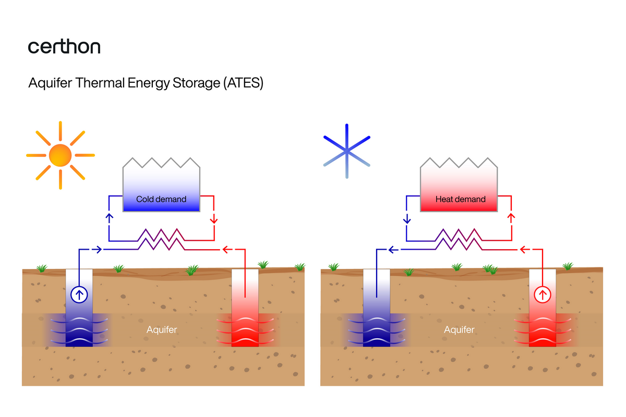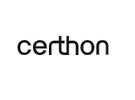Within greenhouse horticulture, there is a constant search for innovative methods to improve production, save costs, and thereby also reduce the ecological footprint. One of the technologies that meet these requirements is Aquifer Thermal Energy Storage (also known as WKO, in Dutch), states Certhon. This system aims to offer a sustainable solution for managing temperature in greenhouses, which not only benefits the grower himself but also the environment.
What is thermal storage?
Thermal storage is a technology in which low-grade thermal energy is stored for later use. A process that takes advantage of seasonal fluctuations in temperature. Excess heat from the summer is stored in the soil for use in the winter. The soil acts as a thermal buffer. The cooling system in the greenhouse extracts heat from the greenhouse air. This is collected and stored in the soil.
In winter, this stored heat is recovered and further heated to the proper temperature to heat the greenhouse by a heat pump. In the secondary circuit of the heat pump, cold is created. This is pumped back into the ground to be used for cooling in the summer.

Advantages of ATES for greenhouse farming
According to Certhon, ATES has several advantages for greenhouse farming. One of these is improvement in energy efficiency as ATES uses natural cycles. In addition, it decreases operating costs due to the reduced use of external energy sources. Moreover, a reduced dependence on fossil fuels also makes it an environmentally friendly application. Further, by storing energy across seasons, the grower benefits from energy savings throughout the year
Implementation and possibilities
Implementing an ATES installation is a costly affair. Research will have to be done into the subsoil and whether it is suitable for storing hot and cold water. This study will also investigate how many doublets (the heat and cold source) are needed to extract the desired heat in and out of the ground. The studies and the drilling itself involve a high investment. "Partly because ATES allows growers to meet increasingly stringent environmental standards and contribute to sustainable horticulture, government incentives and subsidies for sustainable agricultural practices can ease the financial burden on growers. For a grower who wants to cool in summer and heat in winter, the ATES system is a promising step in making horticulture more sustainable."
Certhon's tip: To make the best use of an ATES system, it is important to calculate it with a summer and a winter balance. This is to ensure that at the end of a year, there is sufficient energy stored in the ground to go into the next season. Certhon can help you with this.
Summary
Thermal Storage aims to provide sustainable temperature control for greenhouses, beneficial to growers and the environment through storage, and as-needed recovery, of excess heat in summer and cold in winter. One of the main benefits of ATES is energy efficiency improvements and, therefore, lower operating costs. The implementation of ATES can contribute to a sustainable future for greenhouse horticulture, with growers contributing to sector sustainability. Government support and subsidies can help.
For more information:
Certhon
ABC Westland 555, 2685 DG
Poeldijk, the Netherlands
Tel.: +31 (0)174 22 50 80
[email protected]
www.certhon.com










